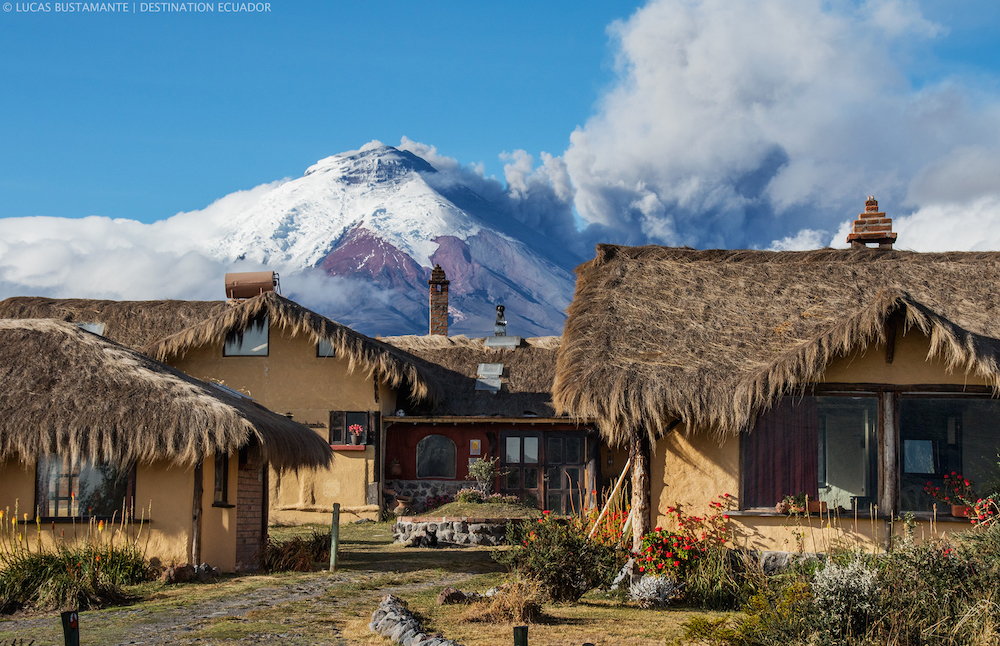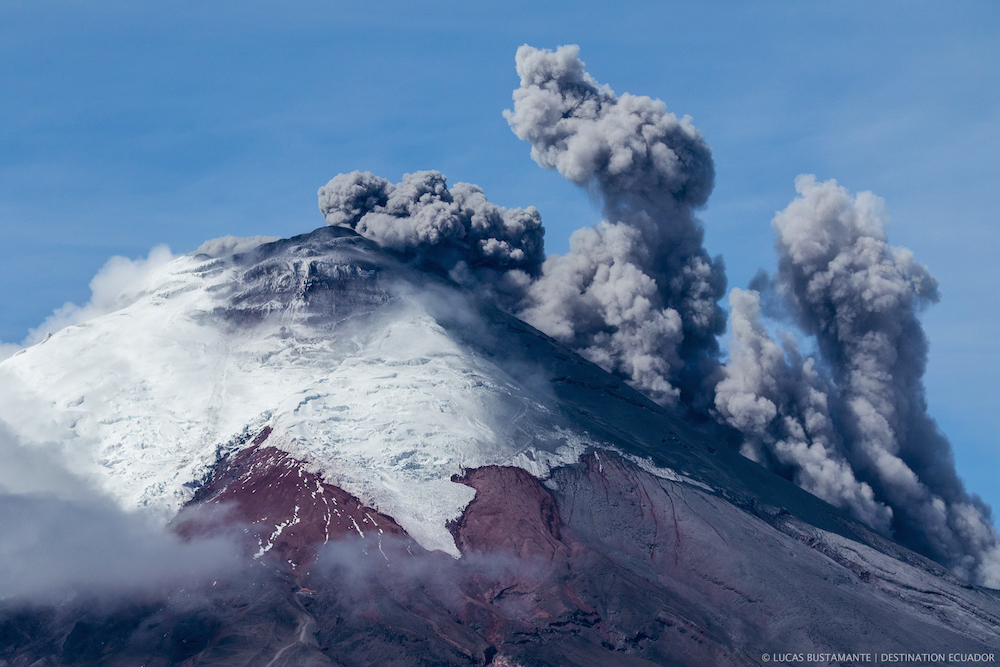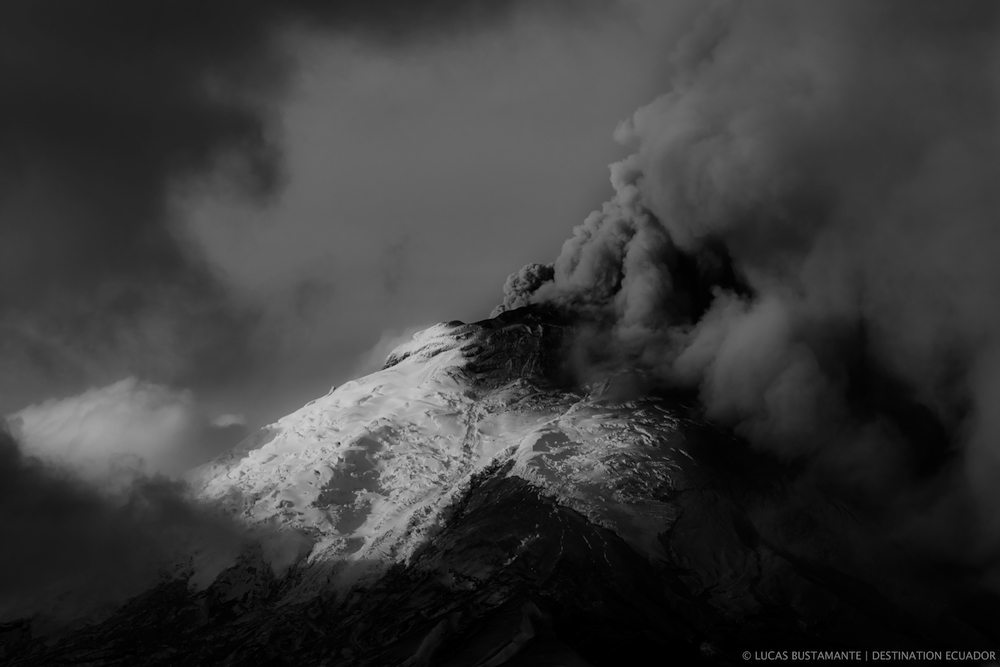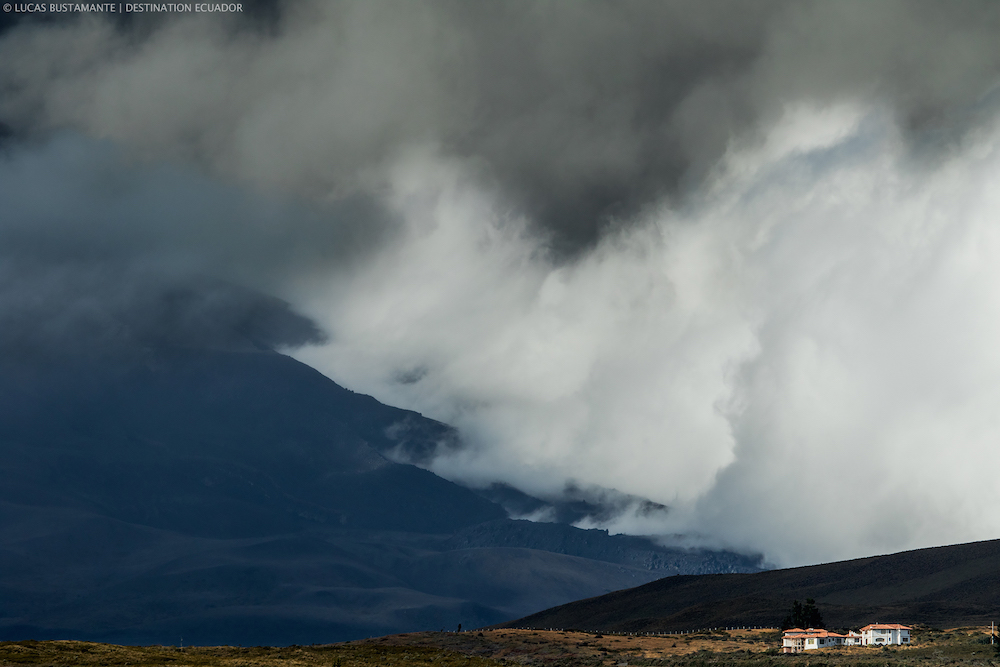The towering volcano of Cotopaxi, which looms over Ecuador, recently began erupting. Photographers Jorge Castillo and Lucas Bustamante recently captured photos of the stunning ash plumes emerging from the volcano. The volcano has blanketed nearby towns and villages with a fine dusting of ash, as the locals wait to see if the eruption proves dangerous enough for widespread evacuation.
Rumbling to life
The first rumblings of life were detected at the volcano as early as April, but the volcano didn't start erupting until mid-August, when volcanologists at the Geophysical Institute in Ecuador detected streams of ash and steam rising about 330 feet (100 meters) above the volcano's top, according to the Smithsonian Institution's National Museum of Natural History's Global Volcanism Program. Volcanologists also noticed several new cracks at the tops of some of the glaciers on the volcano. (Photo credit: Jorge Castillo/Destination Ecuador)
Impact on people
Jascivan Carvalho, who runs an ecotourism lodge called Chilcabamba near the volcano, first learned about the explosion on Aug. 14. "Our manager at Chilcabamba called me at 5 a.m. to say that ash was falling at the lodge and we had 15 clients at the lodge at the time sleeping!" Carvalho told Live Science in an email. "We basically had to wake everybody up, prepare them a quick breakfast and ask them to leave on the safe route we already had defined." (Photo credit: Jorge Castillo/Destination Ecuador) [Big Blasts: History's 10 Most Destructive Volcanoes]
Continuous eruptions
Over the next few days, the volcano stepped up its activity. Geologists noticed a continuous stream of ash on Aug. 22, which lasted for nearly a day. Seismometers also detected activity churning within the volcano's heart — a sign that magma may be rising within the volcanic chamber, according to the Geophysical Institute. (Photo credit: Jorge Castillo/Destination Ecuador)
Get the world’s most fascinating discoveries delivered straight to your inbox.
Menacing presence
The ash plume rose about 0.6 miles (1 kilometer) into the sky and then began spreading westward. Nearby villages, like the one shown here, live in the shadow of the eruption. In conversations with Carvalho, villagers nearby have expressed a range of attitudes about the situation, with some looking constantly at the volcano in fear, others who are resigned to death, and still others hoping for "it" (meaning total destruction) so that they can start all over again, he said. After speaking with the villagers, Carvalho decided to keep the lodge closed indefinitely. "If I am not willing to go and spend the night there, nobody else will," Carvalho said. (Photo credit: Lucas Bustamante/Destination Ecuador)
Ash plumes
Since then, the volcano has continued to release noxious plumes of ash and gas. Here, another view of the eruption shows steam and ash rising above Cotopaxi. The mighty volcano has also rained ash down on Quito, which is about 30 miles (50 km) away. (Photo credit: Lucas Bustamante/Destination Ecuador)
State of emergency
The current rumblings have spurred Ecuador to issue a state of emergency, and the beleaguered country (which is also currently facing political protests) has earmarked $500 million to evacuate people living nearby if volcanic activity accelerates. "It has been very challenging to accept how unprepared we all are and also deciding to shut down our operation close to the volcano," Carvalho said. (Photo credit: Lucas Bustamante/Destination Ecuador)
Active giant
Though the rumbling giant has been quiet, it has an active history. "Cotopaxi is known to be a very dangerous volcano, with the most recent activity around 1944, and five major eruptive episodes and about 30 eruptions since the 1500s," said Janine Krippner, a volcanologist at the University of Pittsburgh who writes for earthquake-report.com. (Photo credit: Lucas Bustamante/Destination Ecuador)
Deadly mudflows
It's not clear how big the current eruption will eventually get, but "Cotopaxi is one of the most extensively monitored volcanoes in Ecuador because of the very active nature of the volcano, and the potential of lahars (mudflows) that can devastate the surrounding valleys due to the snow and ice on the volcano," Krippner told Live Science in an email. "Cotopaxi has the potential for large explosive eruptions or small eruptions that mainly affect the summit area." [The 10 Biggest Volcanic Eruptions in History] (Photo credit: Lucas Bustamante/Destination Ecuador)
Fragile existence
Carvalho, who lives with his wife and kids 1.5 hours away in a distant part of Quito and will likely be safe from direct effects of a major explosion, said that, despite living in the shadow of one of the most active volcanoes on Earth, he didn't realize the implications of that choice until now. "Suddenly, the reality hit me: 'This is so majestic and powerful, and we are so unprepared and fragile,'" Carvalho said. (Photo credit: Lucas Bustamante/Destination Ecuador)
Towering volcano
Cotopaxi, which towers above the landscape at 19,393 feet (5,911 m) is also one of the tallest volcanoes in the world. (The highest volcano on Earth is the sky-scraping Ojos de Salado, which is about 22,615 feet (6,893 m) tall, according to the Global Volcano Program. And measured from base to peak, Hawaii's Mauna Loa, which rises about 30,085 feet (9,170 m) from its seafloor base, is actually the tallest volcano. (Photo credit: Lucas Bustamante/Destination Ecuador)
Follow Tia Ghose on Twitterand Google+. Follow Live Science @livescience, Facebook & Google+. Original article on Live Science.

Tia is the editor-in-chief (premium) and was formerly managing editor and senior writer for Live Science. Her work has appeared in Scientific American, Wired.com, Science News and other outlets. She holds a master's degree in bioengineering from the University of Washington, a graduate certificate in science writing from UC Santa Cruz and a bachelor's degree in mechanical engineering from the University of Texas at Austin. Tia was part of a team at the Milwaukee Journal Sentinel that published the Empty Cradles series on preterm births, which won multiple awards, including the 2012 Casey Medal for Meritorious Journalism.












